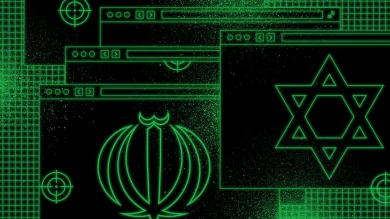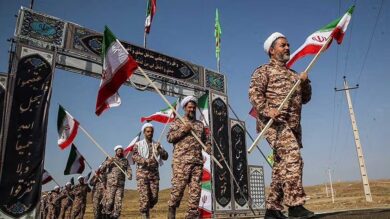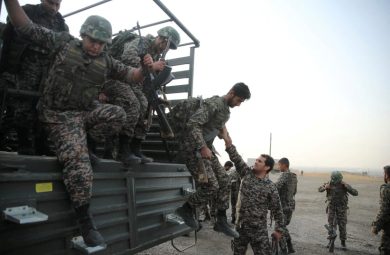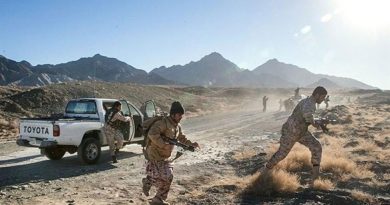For decades, the Islamic Revolutionary Guard Corps (IRGC) has been the primary enforcer of state repression in Iran. It suppresses dissent, censors free speech, and violently cracks down on movements that challenge the power of the regime. However, no challenge seems to unsettle the IRGC more than the rising leadership of Iranian women.
From the streets to digital platforms, Iranian women are leading the charge against authoritarian rule, demanding equality, democracy, and human rights. The IRGC fears this movement not just because it threatens their control, but because female leadership represents an unstoppable force that could shape Iran’s future.
This report will examine:
• How women’s leadership threatens the IRGC’s control.
• Why the IRGC systematically targets women activists.
• The role of Iranian women in shaping the fight for freedom.
• The global significance of women-led movements in Iran.
1. Why the IRGC Sees Women as a Threat
A. Women Challenge the Core of the Regime’s Power
Iran’s ruling system is built on strict gender control. Since the 1979 Islamic Revolution, the government has:
• Enforced compulsory hijab laws to control women’s bodies.
• Limited women’s rights in marriage, divorce, and inheritance.
• Restricted women’s participation in politics, sports, and cultural activities.
For the regime, controlling women is controlling society. When women resist, they disrupt the entire structure of the government’s ideology.
B. Women-Led Movements Have Global Influence
Unlike traditional opposition groups, Iranian women’s movements attract global solidarity. Campaigns like #WomenLifeFreedom expose the IRGC’s abuses to the world, increasing international pressure against the regime.
The IRGC knows that when women lead, the movement gains moral legitimacy and inspires widespread support—both inside Iran and internationally.
2. How the IRGC Suppresses Women’s Leadership
A. Targeting Women Activists and Journalists
The IRGC ruthlessly targets women who speak out, using tactics such as:
• Arrests and imprisonment under vague charges like “propaganda against the state.”
• Torture and solitary confinement in prisons like Evin and Qarchak.
• Sexual violence and threats to break their spirit.
High-profile cases include:
• Narges Mohammadi – Human rights activist imprisoned for years, yet still defiant.
• Nasrin Sotoudeh – Lawyer jailed for defending women’s rights and political prisoners.
• Sepideh Gholian – Journalist arrested multiple times for exposing workers’ rights abuses.
B. Cracking Down on Digital Resistance
Women use social media to document IRGC violence and organize protests. In response, the IRGC:
• Blocks internet access during major uprisings.
• Uses digital surveillance to track activists.
• Launches cyberattacks on journalists and human rights organizations.
C. State-Backed Harassment and Forced Confessions
The IRGC uses forced confessions to discredit women leaders. These confessions—often extracted under torture—are broadcast on state TV to label activists as “foreign agents.”
Despite these brutal tactics, Iranian women refuse to be silenced.
3. The Growing Role of Women in Iran’s Freedom Movement
A. Women-Led Protests Are Reshaping Iran
Women have been central to every major protest in recent Iranian history:
• 2009 Green Movement – Women protested electoral fraud and demanded democracy.
• 2017-2018 Economic Protests – Women linked economic oppression to gender discrimination.
• 2022 Uprising (Mahsa Amini Protests) – Women removed their hijabs in defiance, sparking a nationwide movement.
Unlike previous protests, women now lead, refusing to step back or compromise.
B. Women as Political and Social Leaders
Women are increasingly:
• Organizing labor strikes and student protests.
• Leading underground education movements to empower young girls.
• Using art, music, and digital activism to challenge the regime.
This leadership is unstoppable, even under extreme repression.
4. Why the Future of Iran Will Be Female-Led
A. The IRGC Cannot Control Women Forever
Despite decades of repression, the regime has failed to suppress Iranian women’s defiance. The more brutality the IRGC uses, the stronger women’s movements become.
B. Women’s Demands Go Beyond Gender Equality
Women are not just fighting for themselves—they are demanding democracy for all Iranians. Their leadership is reshaping Iran’s political landscape, ensuring that freedom and justice are at the core of any future government.
C. Global Support Strengthens Women’s Leadership
International organizations and activists can:
• Amplify Iranian women’s voices through global media.
• Pressure governments to sanction the IRGC for gender-based violence.
• Provide digital security tools to protect activists from surveillance.
D. Women’s Resistance is Unbreakable
From the streets to prisons, from classrooms to social media, Iranian women have proven they are unstoppable. Their resistance is redefining Iran’s future, proving that no dictatorship can survive when women rise.
Conclusion: The IRGC Fears Women Because They Represent Change
The IRGC fears women’s leadership because it threatens the core of their control. Women’s activism, resistance, and global influence make them the biggest challenge to the regime’s survival.
Despite brutal suppression, Iranian women continue to lead, proving that the future of Iran will be shaped by their courage and determination.
Join Our Newsletter!
Stay informed with the latest updates, news, and ways to take action in the fight for justice and global security. Sign up now to get updates delivered straight to your inbox!





